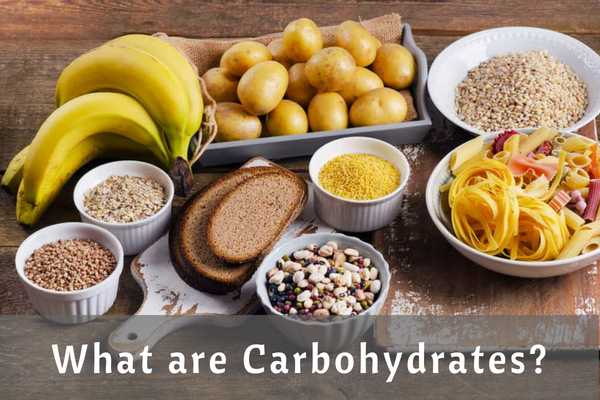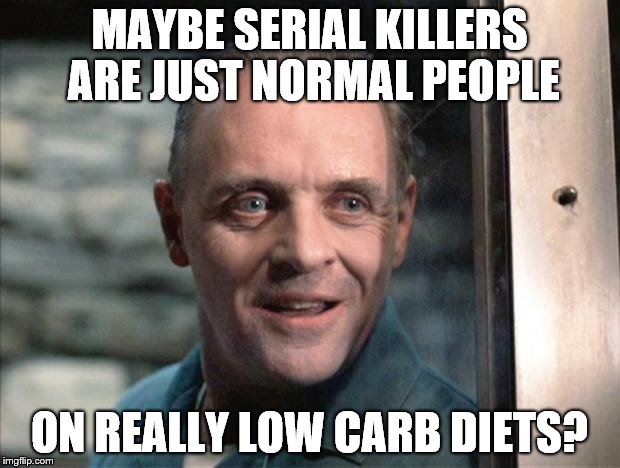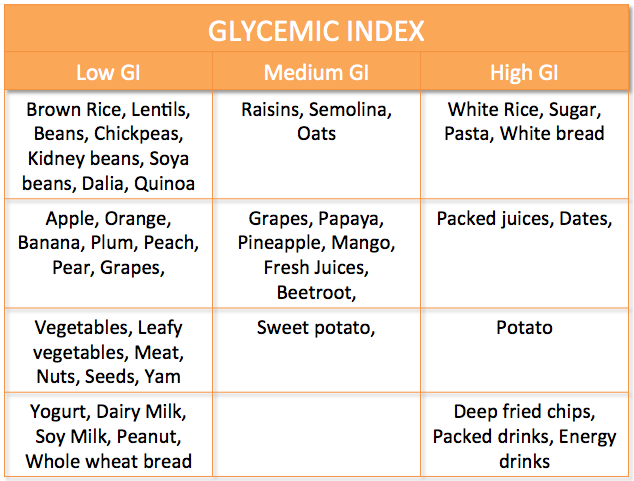A significant portion of our diet consists of carbohydrates (a.k.a carb), be it roti, idli, dosa, rice, sandwich, pasta. With weight loss or fat loss becoming one of the major problems these days, we start blaming carbohydrates. Most of us even go on the extremely low carb or zero carb diets. Though these low carb diets show some results, in the beginning, they are not sustainable. Over a period, it affects our body in more than one ways. Once we switch from low carb to the regular diet, we tend to gain more weight than what we started off.
There seems to be a giant Carb-phobia going around among people, and they tend to believe that carbs are enemies for weight loss. The standard questions people have are – How much carb is enough for us? Which carbs are good and which are bad? Which ones to avoid or which ones to include in diet?
There are 4 macronutrients, which are must-haves for our body – Protein, Fat, Carbohydrates (Carb), Fibre. Each of these nutrients has an important role to play in our body and digestive system. Consuming them in less or excess quantity will cause dysfunction of the body. The protein comprises of amino acids and helps building muscles. Fat helps metabolism and provides energy when the body needs. Carbohydrates provide us energy and also help in burning stored fat in our body. Fibre keeps us feel full for longer and also improves our digestion. I will be covering each of these macronutrients in my future posts, for now, let’s focus on carbs.
Get The Facts Right
Myth : A commonly heard myth, especially among women is, – I will go on zero carb diet to lose weight since carb makes me fat.
Fact :
Carb doesn’t cause fattening, EXCESSIVE carb does.
When you blindly go on cutting the carb in hope to lose weight and look leaner, what you end up with, is looking weak and sick. Your skin loses the charm, and you don’t feel energetic at all to even continue with daily activities. More harmful is the absence of carb in the diet which causes slow functioning brain and impacts your performance in studies or work or even day-to-day tasks.
Carbohydrate-deficiency may cause fatigue, weakness, headaches, low concentration, nausea, constipation, bad breath and vitamin and mineral deficiencies.
Why Does Our Body Need Carbohydrates
Carbohydrates provide our body with the energy, we require to function. The foods with carbohydrates are wheat, millets, rice, fruits, bread, pasta etc.
The body converts carbohydrates to glucose, which is the primary source of energy for our body. The glucose is consumed in our bloodstream and increases the blood sugar level. The body cells absorb glucose and convert to energy to sustain themselves, grow and perform everyday tasks. The extra glucose that doesn’t get converted to energy is stored in the form of fat, as a reserve energy source.
For optimal function of our body cells, it’s essential to include an appropriate intake of carbohydrates in our diet. In the absence of which, the body turns to stored protein and fat to meet the energy requirement. Though, the process of breaking protein and fat into energy is highly complex and requires nutrients that our body needs for other purposes.
In simple words, the elimination or drastic reduction of carb in our diet can leave us feeling weak and tired.
Ideally, 40-60% of your everyday calories should come from carbohydrates, depending on your body type.
For example, if you consume 2000Calories every day, about 800-1200 Calories should come from carbohydrates, which is about 200-300grams.
To better analyze your daily food intake, I use the HealthifyMe app. This app helps me calculate the daily macronutrient requirement (protein, carb, fat, fibre) and also allows me to track my everyday diet, which has helped me a lot in finding the right proportion of food I should consume. (PS: I do not work for HealthifyMe. The app has genuinely helped me a lot, and I think it’s a great way to monitor food intake.)
What are Carbohydrates And How Our Body Absorbs Them
The body consumes carbohydrates by breaking it into glucose. Once the food reaches the small intestine, its converted into glucose and is taken in by the bloodstream. Our body cells absorb the glucose from the blood and the excess glucose deposits in cells in the form of glycogen or fat.
Although all the carbohydrates convert into glucose, they are not all equal. There are some good carbs and some bad carbs.
Bad carbohydrates, when consumed, release a high amount of energy instantly. If the body is not in a state to absorb all the energy, the body stores it as fat, to use it later when it needs energy. Most of the refined foods come under this category, like sugar, white rice, packaged foods etc.
On the other hand, good carbs take longer to break down and hence provide energy to the body over a more extended period. This reduces chances of carbs converting into fat. Fresh fruits, vegetables and whole grains are all good carbs.
So what makes a good carb? It’s fibre. All the ‘bad carb’ and refined foods don’t contain much fibre, while a considerable proportion of ‘good carb’ foods is comprised of fibre. When we consume high foods that are rich in fibre, they don’t get converted to glucose quickly. Fibre slows down this process and avoids body to reach to high energy state.
The role of fibre in our diet is not to provide any nutrition, but to facilitate digestion. It helps improve bowel movement.
An average individual should intake about 25-38grams of fibre every day, which depends on the proportion of the food you intake.
To understand the different types of carbohydrate molecules and their digestion process, here is a detailed article – Everything You Need To Know About Carbohydrates.
Glycemic Index – Measures Goodness of Carbohydrates
Glycemic index (GI) is the factor by which the carbohydrates get converted to Glycogen in our body. Glycogen is the enemy that causes fat accumulation. The higher the GI, higher are the chances of you gaining fat deposition from that food.
High GI carbohydrates are best consumed immediately after a high-intensity workout or a long sprint. When the body needs quick recovery, and high GI foods come in handy to help.
If you are looking for fat loss or maintaining the body-fat, try consuming more of low GI food. And avoid high GI food, especially in late evenings when our energy requirements are minimal.
Low GI foods are good but that doesn’t mean to consume them in any amount. Multiplying GI of your food with the food quantity gives Glycemic Load of your food intake.
The fact is – Not Glycemic Index, but Glycemic Load is the real culprit that causes Glycogen in your body and intern fat accumulation.
This means, not only it’s important to replace high GI food with low GI foods, but you should also watch out for the quantity that you intake. High GI foods or a high quantity of low GI foods, both are going to contribute to high GL.
Foods with a GI (glycemic index) below 55 are low GI foods. A GI of 56 to 69 is medium, and high glycemic index foods have a value of 70 or more.
Food Category Based on Their Glycemic Index
Below is a table to understand foods that fall in Low, Medium and High GI categories. This can be helpful for your everyday choice of food. (It will be a good idea to print the below table when you are in the process of changing your carb selection.)
To know GI and GL value of foods, here are a few good sources –
Glycemic Index Chart & Glycemic Load Chart








Leave a Reply